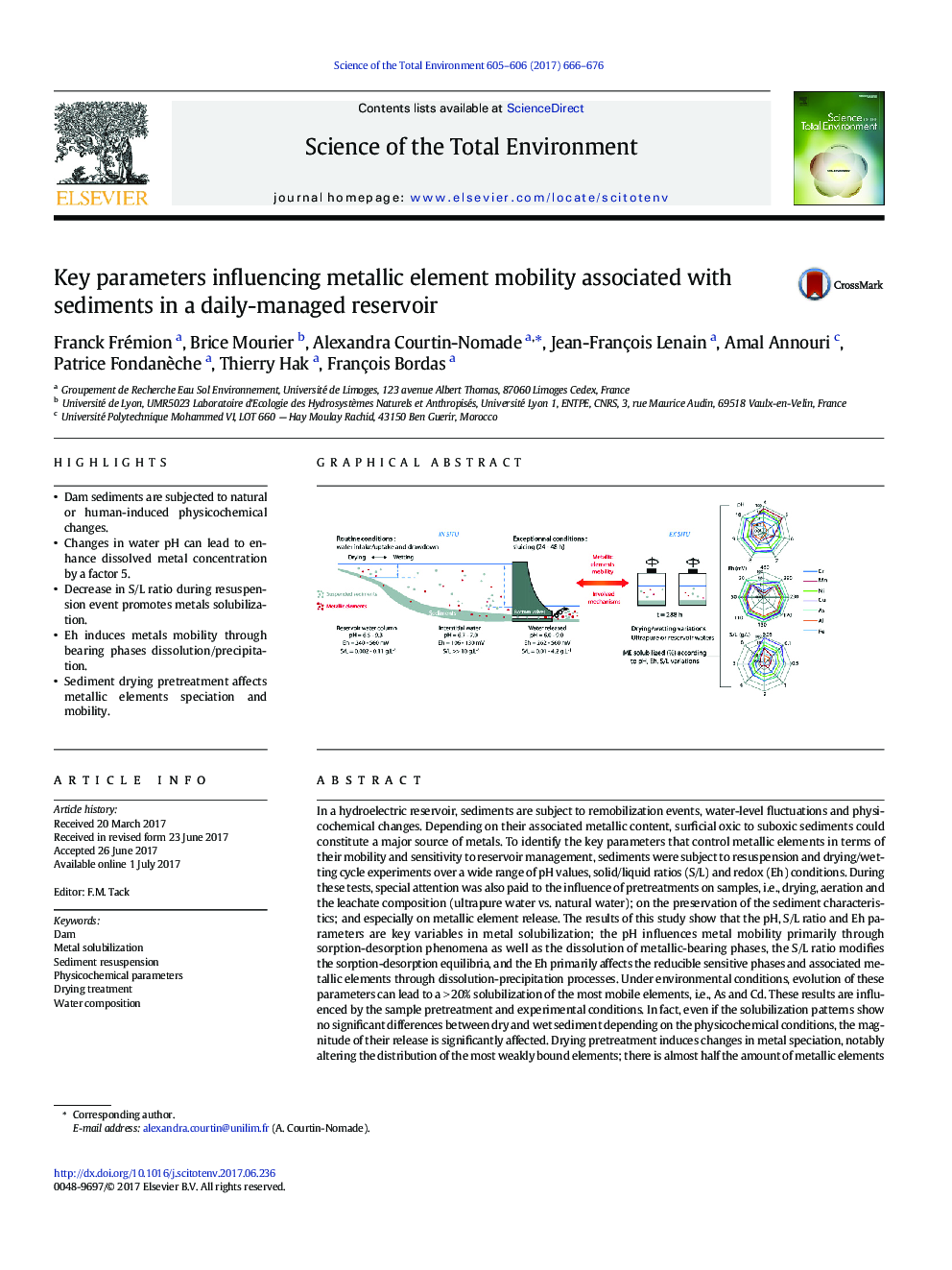| کد مقاله | کد نشریه | سال انتشار | مقاله انگلیسی | نسخه تمام متن |
|---|---|---|---|---|
| 5750635 | 1619695 | 2017 | 11 صفحه PDF | دانلود رایگان |
- Dam sediments are subjected to natural or human-induced physicochemical changes.
- Changes in water pH can lead to enhance dissolved metal concentration by a factor 5.
- Decrease in S/L ratio during resuspension event promotes metals solubilization.
- Eh induces metals mobility through bearing phases dissolution/precipitation.
- Sediment drying pretreatment affects metallic elements speciation and mobility.
In a hydroelectric reservoir, sediments are subject to remobilization events, water-level fluctuations and physicochemical changes. Depending on their associated metallic content, surficial oxic to suboxic sediments could constitute a major source of metals. To identify the key parameters that control metallic elements in terms of their mobility and sensitivity to reservoir management, sediments were subject to resuspension and drying/wetting cycle experiments over a wide range of pH values, solid/liquid ratios (S/L) and redox (Eh) conditions. During these tests, special attention was also paid to the influence of pretreatments on samples, i.e., drying, aeration and the leachate composition (ultrapure water vs. natural water); on the preservation of the sediment characteristics; and especially on metallic element release. The results of this study show that the pH, S/L ratio and Eh parameters are key variables in metal solubilization; the pH influences metal mobility primarily through sorption-desorption phenomena as well as the dissolution of metallic-bearing phases, the S/L ratio modifies the sorption-desorption equilibria, and the Eh primarily affects the reducible sensitive phases and associated metallic elements through dissolution-precipitation processes. Under environmental conditions, evolution of these parameters can lead to a >Â 20% solubilization of the most mobile elements, i.e., As and Cd. These results are influenced by the sample pretreatment and experimental conditions. In fact, even if the solubilization patterns show no significant differences between dry and wet sediment depending on the physicochemical conditions, the magnitude of their release is significantly affected. Drying pretreatment induces changes in metal speciation, notably altering the distribution of the most weakly bound elements; there is almost half the amount of metallic elements associated with the exchangeable fraction in dry compared to wet sediments. The solubilization percentages were higher in the ultrapure phase than in reservoir water primarily due to the low pH, which influenced the sorption equilibria.
303
Journal: Science of The Total Environment - Volumes 605â606, 15 December 2017, Pages 666-676
